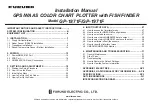
88
Lansis
®
System Manual
Issue 1
EAR99
Technology
Subject
to
Restrictions
Contained
on
the
Cover
Page.
By changing the values in the Active fields, the image acquisition speed can be
increased by reducing the size of the active area in the definition. The result will be
faster, but lower resolution, data acquisition. Operating in this mode would ordinarily
require that the chip be masked so that only the reduced active area is exposed. This
will prevent unwanted charge from spilling into the active area or being transferred to
the shift register.
With a high performance imaging spectrometer, such as Teledyne Princeton
Instruments’ IsoPlane family, this can be done by masking at the input of the
spectrometer. This has the advantage of preventing the need to add masking inside the
camera. Older imaging spectrometers can be used this way, but the results will not be
as good as with an IsoPlane.
By default, if there are no Pre-Dummy rows, the serial register will be cleared before
rows are shifted.
NOTE:
The
Clean
Serial
Register
function
only
appears
in
the
Sensor
Cleaning
pane
when
the
Inactive
Area
Top
Margin
is
0
rows
and
Pixel
Bias
Correction
is
off.
De-select the check box to
deactivate the serial register cleaning.
D.1.1
Custom Timing
NOTE:
Custom Timing is standard within LightField for full frame
CCD cameras.
Custom Timing is configured using the Custom Sensor button on the Sensor expander.
Vertical shift rate is the time required to shift one row into the serial register. The
smaller the value, the faster charge will be shifted up one row at a time toward the serial
register.
In the Custom Timing panel, vertical shift rate is configured by selecting the desired rate
from the pull-down menu, as illustrated in
.
Figure D-2: Custom Timing
44
11
-0
174
_
0
0
0
8
















































